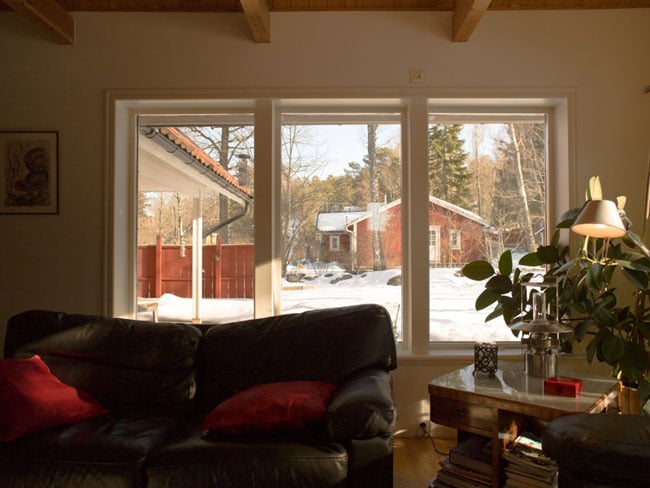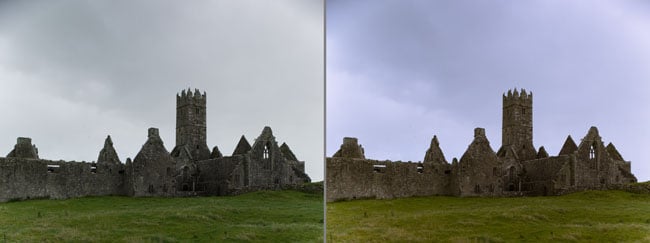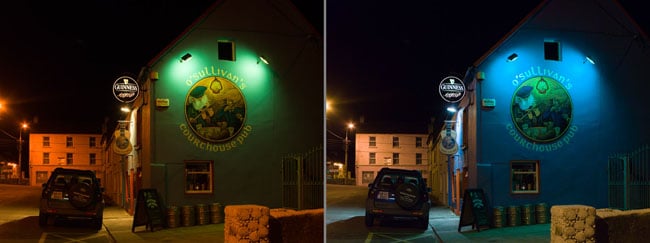This article is more than 1 year old
Snapper's decisions: Whatever happened to real photography?
Automatic for the People
Dynamic change
Inevitably there are pros and cons but let’s focus on the positives for a moment. As will be explained here, the resolution of a good digital camera is limited by the lens not the sensor. The colorimetry is more accurate and more stable than film and the dynamic range is greater. Fig. 1 shown here was taken in Sweden with a 12 stop digital back and shows full sun on snow outside the windows; yet indoor details are also visible. That picture could not be taken as a single exposure with film.

Fig.1. This scene has too much dynamic range for film and the eye but not for a 12 stop digital sensor. Note that the DR has had to be reduced to allow the eye to take in the whole scene
A great advantage of a high dynamic range camera is that if a shot is under-exposed, it can be dug out of the dark in post production without obvious noise build up. Over exposure causes clipping and there is no solution, so if in doubt with a digital camera, go for under exposure.
But the advantages of digital photography go way beyond the technical quality. The primary advantage is the near immediacy with which the captured image can be assessed so that if anything is not right another shot can be taken. This is not such a big deal for holiday snaps, but when using fill-in flash, perspective control lenses, filters, or in macro-photography it allows a better result to be obtained sooner.
With film you have to wait for it to be developed before you can find out what you did wrong, by which time you have forgotten what you did unless you wrote it all down. Many digital cameras can display histograms of the captured image so a rapid confirmation of correct exposure can be made. The ability to zoom in to a small area of the captured image allows a check that what should be in focus actually is, and equally importantly, what should not be in focus isn’t.

Fig 2 (left) Ross Errily Friary shot in the rain, the cloud cover has changed the colour temperature and the stone is almost monochrome. Fig 3 (right) colour correction brings out the hue of the stone – click for a larger image
For a long time I shot 35mm transparencies, and the photography was essentially complete when the shutter fired. I was always disappointed with the colorimetry when the sky was overcast and everything came out looking cold. In principle I could have used filters on the camera, but how many would I need, and how would I assess which one to use? I might have taken years to learn how to do it.
With a digital camera I can change the effective colour temperature of the illumination a few degrees at a time either in the camera or in post production and obtain balanced shots when the ambient light is off the standard white point. I learned how to do it in minutes. Fig.2 shows a near-monochrome shot taken in rain, whereas Fig.3 shows the colour corrected result. Fig. 4 shows a colour problem due to artificial light, whereas this has been white-balanced in Fig.5.
In addition to having many advantages, there is also a down side to digital photography. Clearly a digital camera contains some computing power and that can be used not just to transfer the image data to the memory device, but for various other purposes. These include automatic exposure and automatic focus. Whilst one argument is that these features make the camera easier to use, the other side of that argument is that if no skill is required, no skill will be learned.

Fig.4 (left) Tommy O’Sullivan’s pub in Dingle is the best live music spot for miles. Artificial light with a very low colour temperature make the camera think it’s green. Fig 5 (right) after colour correction, showing that the pub is actually blue. Note the license plate on the car is now white – click for a larger image
Traditionally, the still camera market was divided into viewfinder cameras and SLRs. In the former there is an optical system that is held to the eye for framing purposes that is quite separate from the main lens. The framing accuracy of these cameras was never good.
In contrast, the SLR (single lens reflex) camera intercepted the light from the main lens with a mirror so the viewfinder showed what the film would see, allowing the use of interchangeable lenses. The mirror would swing out of the way before the actual exposure. Viewfinder cameras were small and light and appealed to the mass market, whereas SLRs were heavier and appealed to the enthusiast and the poseur.
